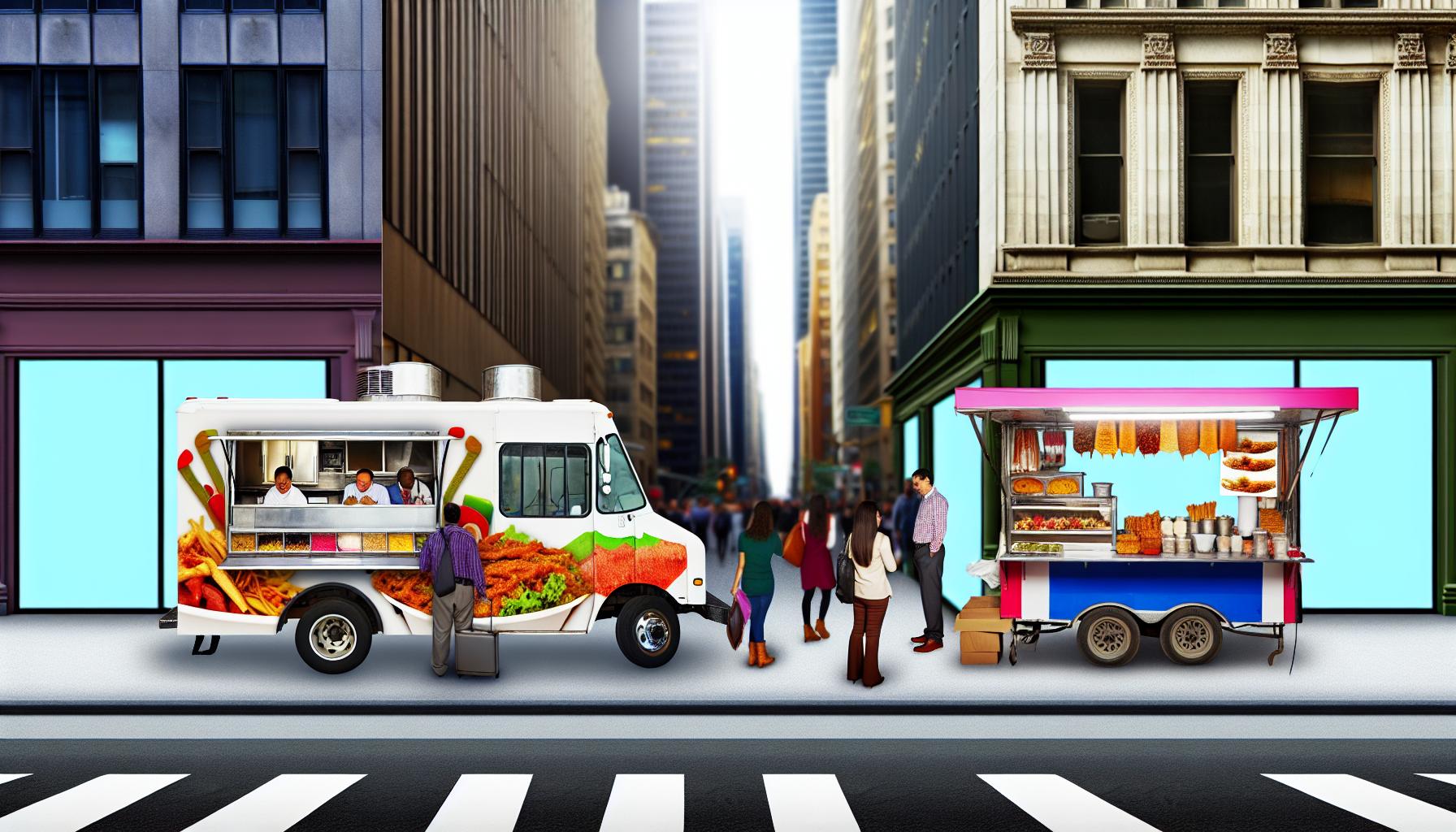When considering the tantalizing world of dining options in urban settings, two standout options often come to the forefront: food trucks and street food. While they may seem similar at first glance, the distinction between food trucks and street food is crucial for future restaurateurs, food enthusiasts, and anyone looking to dive into the gastronomic trends of their local scene. This article delves into the essentials of food trucks and street food, especially focusing on the comparison of the two: Food Truck vs. Street Food.
What Exactly is a Food Truck?
Food trucks are beautifully modified vehicles that serve a specific menu, providing a restaurant-like experience on the go. They often feature a limited, but delicious, selection of gourmet cuisine, ranging from tacos to gourmet burgers and fusion dishes that combine culinary traditions.
- Mobility: Food trucks can easily move to different locations, allowing them to tap into various markets and events.
- Branding: They often have unique, eye-catching designs that reflect their culinary theme and attract customers.
- Menu Variety: While they provide limited menus, these are often well-thought-out and can be changed regularly to keep things fresh.
As an example, Grubhub lists numerous food trucks across major cities that provide an array of dining options. Their mobility allows them to be found in bustling areas, local fairs, and popular events.
The Essence of Street Food
Street food, in contrast, is a broader term that encompasses all types of foods sold on sidewalks, in markets, or at festivals. It includes anything from snacks and quick bites to full meals, often prepared in non-commercial settings. Here are some key characteristics:
- Diversity: Street food can include anything from hawker stalls to local vendors selling homemade specialties, representing a culture’s culinary heritage.
- Accessibility: It’s generally more affordable than food truck meals and often emphasizes authentic, regional flavors.
- Less Regulation: Street food vendors might not always have the same level of licensing and regulations as food trucks, leading to a unique and sometimes spontaneous dining experience.
The global street food scene is vibrant! For example, vendors in Bangkok are renowned for their pad Thai and tom yum, while markets in Mexico City bustle with vendors selling quesadillas and elote. This is street food’s essence—an ever-evolving tapestry of deliciousness.
Differences in Business Models
When comparing Food Truck vs. Street Food, business models also diverge significantly:
- Investment: Food trucks often require a higher upfront investment in vehicle costs and permits, while street food vendors may start with just a cart or booth.
- Operational Flexibility: Food trucks can strategically choose high foot traffic areas or events, while street food vendors typically establish a more permanent spot, often waiting for regular patrons.
- Brand Development: Food truck owners can create a brand identity that’s often linked to their mobile platform; street food vendors rely heavily on word-of-mouth and repeat customers.
Customer Experience
The dining experience can also vary widely between food trucks and street food:
- Seating Arrangements: Many food trucks offer seating options nearby or collaborate with local establishments for dining spaces, making it more comfortable for customers.
- Social Media Presence: Food trucks are often adept at using social media to build a following and promote their location. Many patrons track their favorite trucks through platforms like Instagram or Twitter.
- Community Engagement: Street food vendors often become fixtures in their neighborhoods, fostering a community spirit that can be absent from food truck culture.
For instance, the Street Food App provides insights into local vendors, encouraging people to explore their neighborhoods and discover hidden culinary gems.
Quality and Preparation
Quality can vary significantly between food trucks and street food, depending on the vendor:
- Ingredients: Food trucks often source high-quality ingredients, focusing on flavor and presentation due to their brand identity.
- Preparation Style: Street food can have a more home-style cooking approach, offering authenticity and those “secret family recipes” that are hard to replicate.
For example, a renowned food truck may offer gourmet renditions of classic dishes, whereas a street vendor might present an affordable and delicious plate of street tacos made from a passed-down recipe.
Conclusion: The Perfect Taste Bud Experience Awaits!
So, whether you’re following the delightful scents wafting from a food truck or seeking out the favorite street food vendor in your local market, each option has its unique offerings. The choice between food trucks and street food boils down to personal taste and the dining experience one seeks. Both are fantastic avenues for culinary exploration, and you’ll likely find something to enjoy no matter which path you choose. Remember, a meal on the move is nothing to scoff at!


